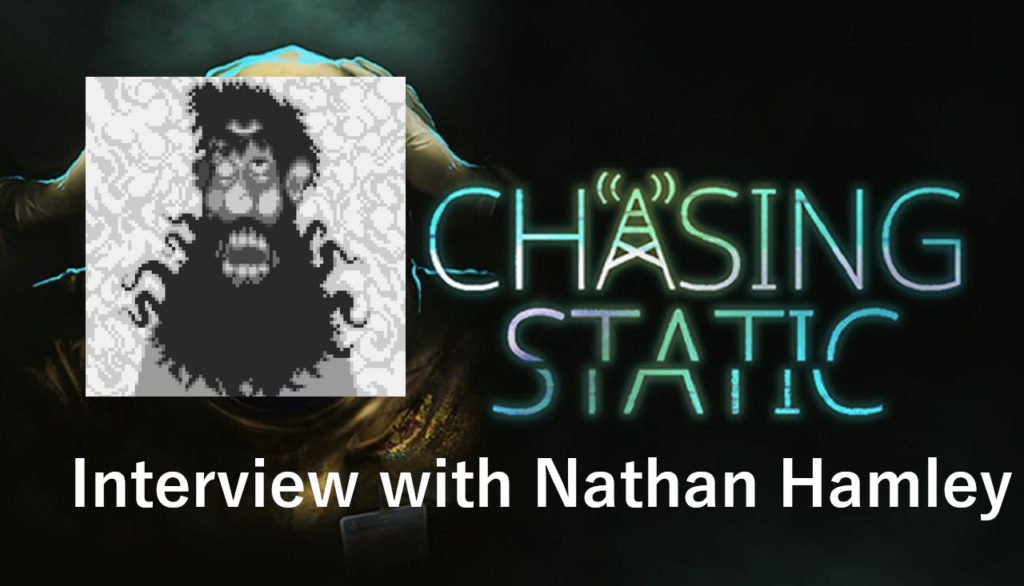Chasing Static Interview with Nathan Hamley

Many indie games out there are trying to make their mark by including an interesting idea within them to attract its audience. Of the ones coming out soon, there was one that really caught my interest, that being Chasing Static. It was a game that described its gameplay as “audio-based”. After trying out the demo, I felt the intrigue in its mysterious story about a government cover-up. Following this intrigue, I got in touch with the game’s creator, Nathan Hamley from Headware Games, to ask him more about the upcoming horror game. In this interview, we talk inspirations, artistic choices, and approaches to atmosphere among more. Anyway, let’s begin!
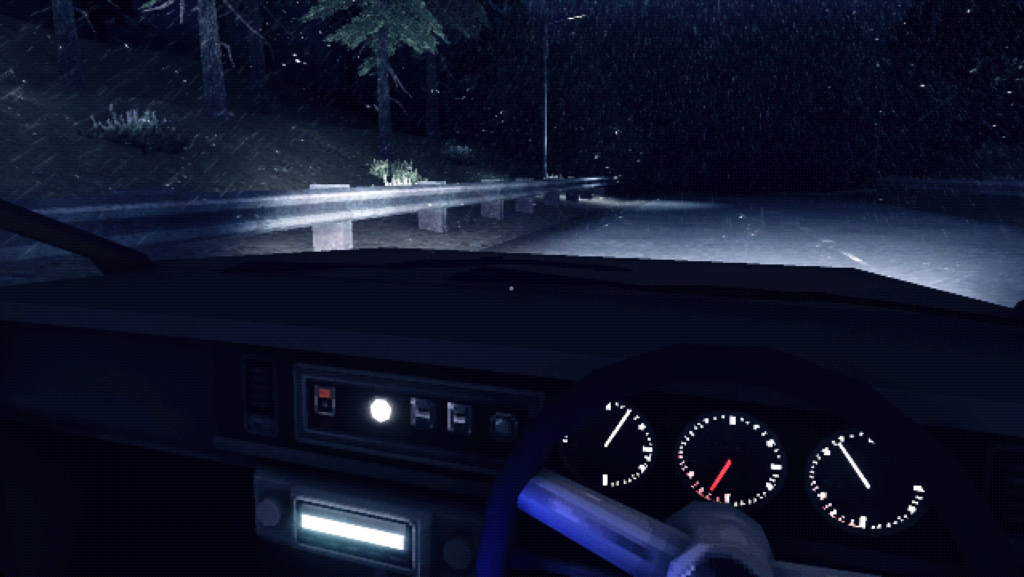
Freelance: So, to start things off, tell us about you and Headware Games.
Nathan: Hey! I’m Nathan, a solo developer from Bristol in the UK and Headware Games is the company handle I go by for my releases. I previously released a point and click adventure game, Guard Duty on PC and consoles and am now approaching the release of Chasing Static. I handle almost all aspects of the game development, art, story, design, programming etc. I’ve been lucky to work with my brother Brendan for the creation of Chasing Static’s soundtrack and my publisher is handling porting the game to consoles.
F: Where did you first get the idea for this Chasing Static? What caused you to pursue it?
N: For this game I wanted to explore the audio side of horror, it’s the most important element of horror design. I started with that mindset and asked myself how I could involve the player more in that experience. After talking with some shortwave radio enthusiasts and a little research into number stations (check those out if you’re unaware of them!) I decided to go with something themed around radios.
Narrative wise I was primarily inspired by a camping trip we took in Wales 2 years ago. We drove to Snowdonia arriving shortly after sundown in a particularly fierce storm, the roads were thin, bumpy and often accompanied by a sheer drop on one side. We got lost, It took hours to get to our campsite and signs of life were few and far between, the whole experience was kinda terrifying- in a good way! The game is also inspired by films like Beyond the Black Rainbow, Annihilation, The Thing and The Ritual.
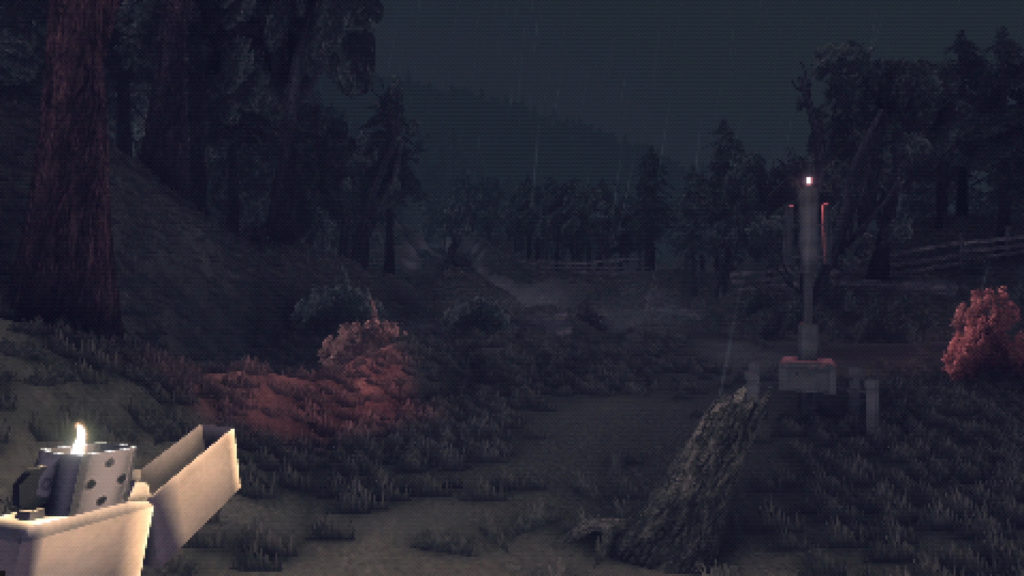
F: I assume that’s why you decided to have it take place in the forests of Wales? Or are there just not enough creepy forests near Bristol?
N: Haha, yeah North Wales is fairly open and sparsely populated. Has a cool vibe to it.
F: Were there any other influences in the making of Chasing Static? During the demo, maybe I’m just a basic guy, but I noted hints of Lynchian and very obviously Silent Hill.
N: Yeah, Silent Hill was definitely an influence. The first two games are my go-to games when I fancy replaying something spooky. I guess most horror developers take influence from that series, you can’t really top it. I really enjoy David Lynch’s work and how he finds a way to make simple character based scenes feel uncomfortable, often just relying on the writing and performances of the actors. He has a knack for pushing things into the uncanny without them becoming too hard to engage with.
F: I mean, that one episode of the new Twin Peaks was…something.
N: Yeah, that whole new season was really something. That episode was really something else.
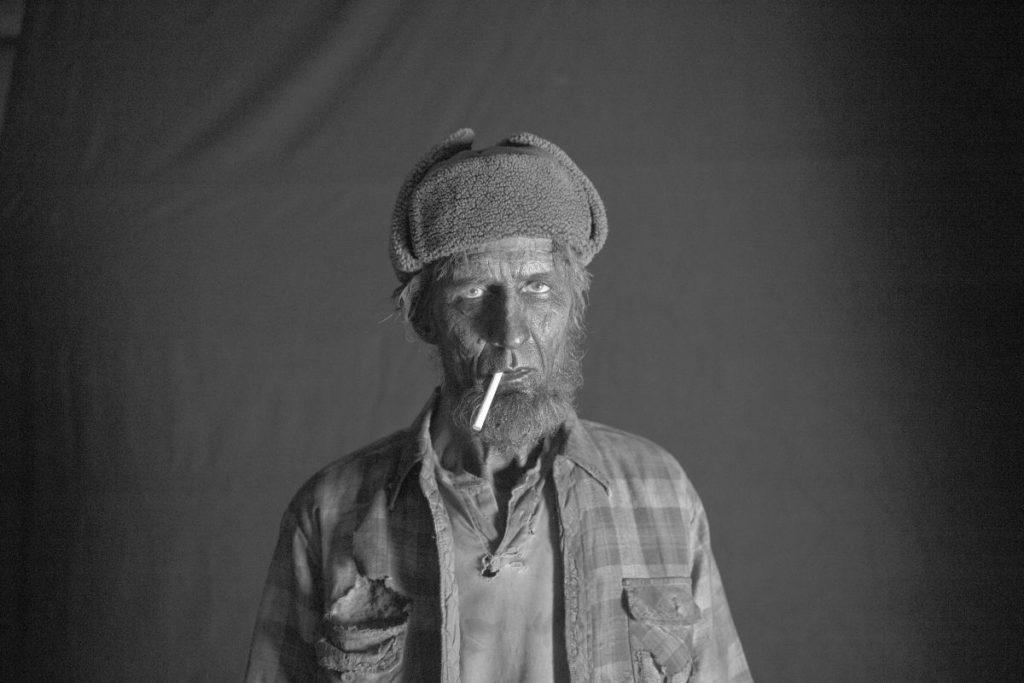
F: Why this particular artstyle?
N: I grew up with the PS1 and love finding and playing new obscure titles for the system. I think there’s a lot of potential in the style that hasn’t been fully explored yet. Personally I decided to go with a ‘PS1-like’ style, not sticking to the hardware restrictions when it came to replicating the visuals. I knew I wanted that crunchy low res look but also wanted to play around with things like dynamic lights and post processing (primarily colour grading).
True horror comes from the unknown, from letting your mind wander and imagine what is lurking in the shadows. I’ve seen hundreds of potentially good horror films that completely ruin the mystery by showing their monsters/antagonists. Once you’ve seen that it’s a CGI demon or some bloke in a rubber suit all the fear is lost and you’re back to simply watching things prance about on a screen. The beauty of this style is that the resolution severely limits fidelity, forcing the player to use their imagination more, subconsciously or not. It really compliments horror.
F: Now, the gameplay in Chasing Static is more audio-based, so you must be working a lot with foley and audio design. Any interesting things you’ve had to do to achieve specific sounds?
N: I create most of the sounds by combining recordings from a sample library. I’ll EQ them, pitch shift, add reverbs or other effects. Quality of the audio used was my main priority so I had to make sure that I was pulling sounds from a top quality source. For my last game I recorded a bunch of the sound effects myself. Creating foley is a really fun part of the process but it’s a huge time sink. For this game I decided to cut myself some slack in that area and just paid for a subscription to a sound library so I had something to start with.
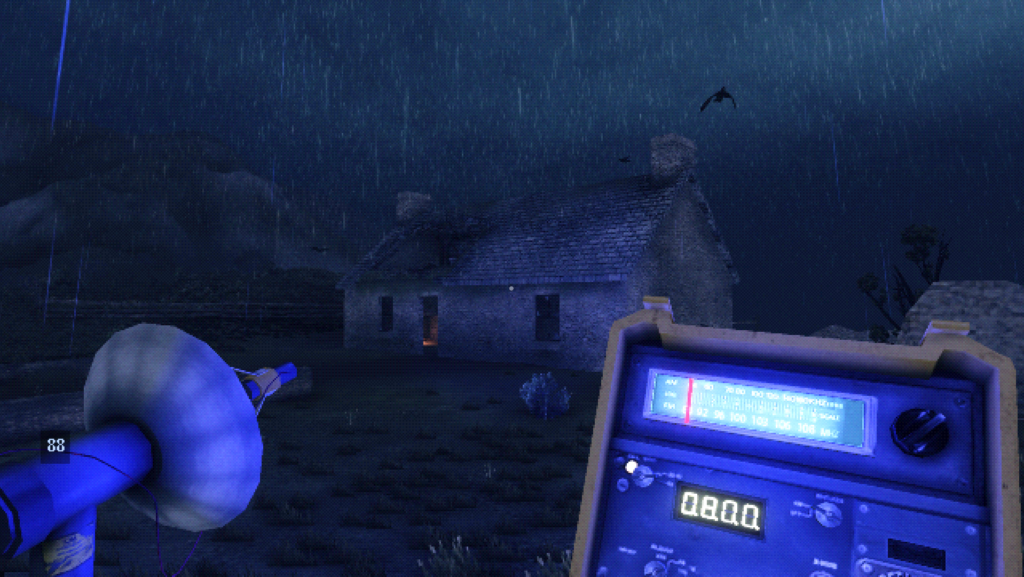
F: Of course, in any horror game, one of the most important parts is its atmosphere. Now, in the demo you’ve already had bizarre sights and sounds. What are you attempting with the atmosphere to keep up the standard of making the player feel uneasy?
N: One element of the game’s design that I knew needed to be really solid from the start was the music, I’ve been working with my brother since the early stages of development to establish a thematic sound for the game. We wanted to really lean into dark ambience, but give the overall soundtrack its own ‘theme’ or distinguishable sound. Being able to work with a composer alongside the development of the game allowed us to really integrate the music with the locations and events experienced throughout the game. I think the soundtrack contributes massively to retaining a consistent atmosphere throughout the experience. It just so happens that the atmosphere is one of unease and mystery.
F: What other kinds of research have you done for this game, barring anything that might be spoilers, of course?
N: I watched a lot of films! I find films (of all genres) really inspiring when it comes to making games, I tend to focus on narrative and setting with my games and films make for a great example on how to execute this stuff well. I also played a tonne of PS1, PSP and PS2 games, primarily horror games. I tend to prefer playing older games as the limitations are closer to the limitations I face when making a game solo, a lot of AAA games just feel like they’ve thrown as many resources at the project as possible to add detail and pseudo depth. With older games the craft really shines through, its more obvious where each team member put their stamp on the project. It’s helpful too, to see how they overcame certain limitations in things like level design, poly count or lack of animations resources. I love to analyse that stuff, figure out why they did things in a certain way. Looking at these games from a design point of view is really helpful when planning out the structure of a game, or the layout of the maps.
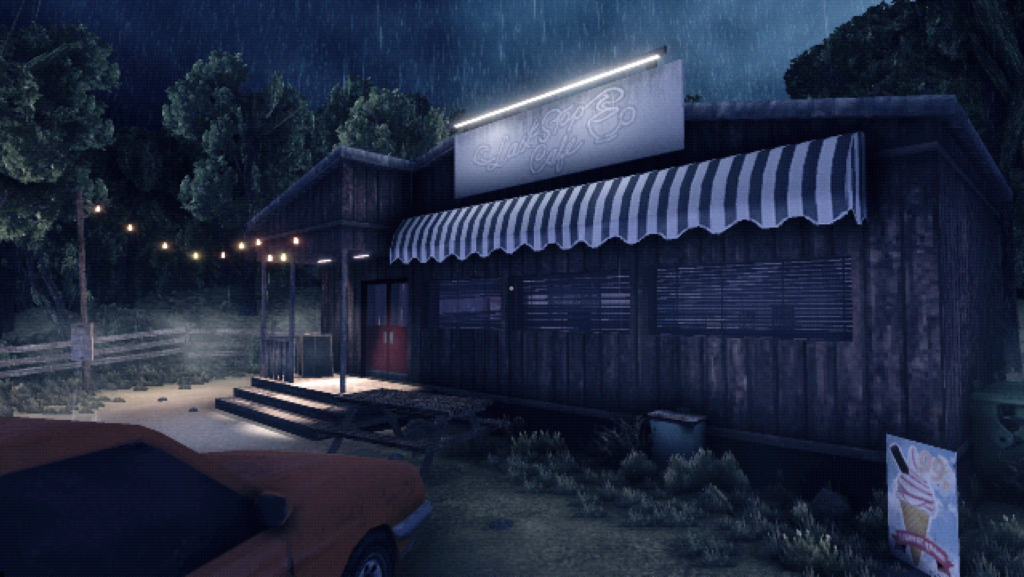
F: What has been the toughest obstacle with Chasing Static, and what did you do to overcome it?
N: Probably the learning curve moving from working in a 2D engine (Adventure Game Studio) to working in 3D in Unity. I had a bit of experience with Unity, I’d worked on a couple of 2D mobile game prototypes previously but not something 3D (or polished past a prototype stage). It was a really fun experience for the most part, there’s a lot to learn but with assets like Adventure Creator it made the transition much smoother. I’m very much an artist/designer first and a programmer second. I make do with what I can when it comes to the technical side of making games. I try to keep things as simple as possible and focus on my strengths, sticking to a narrative driven game helped in that regard. Using Adventure Creator meant that things like a save system, dialogue systems and inventory etc had a solid foundation to build upon and with a few custom scripts I was able to shape these into what I had envisioned for the game.
F: Now, you saw an upsurge of activity about your game after posting the demo. How does it feel to show off a part of the work after all that time in development?
N: It’s great, I found it gave a much needed boost in motivation at what was a pretty tough time of development, pushing through the last 1/4 of the game. Was lovely to see so many people getting the vibe of the game and not expecting it to be something else. Overall players seemed to love the slow paced, more atmospheric approach.
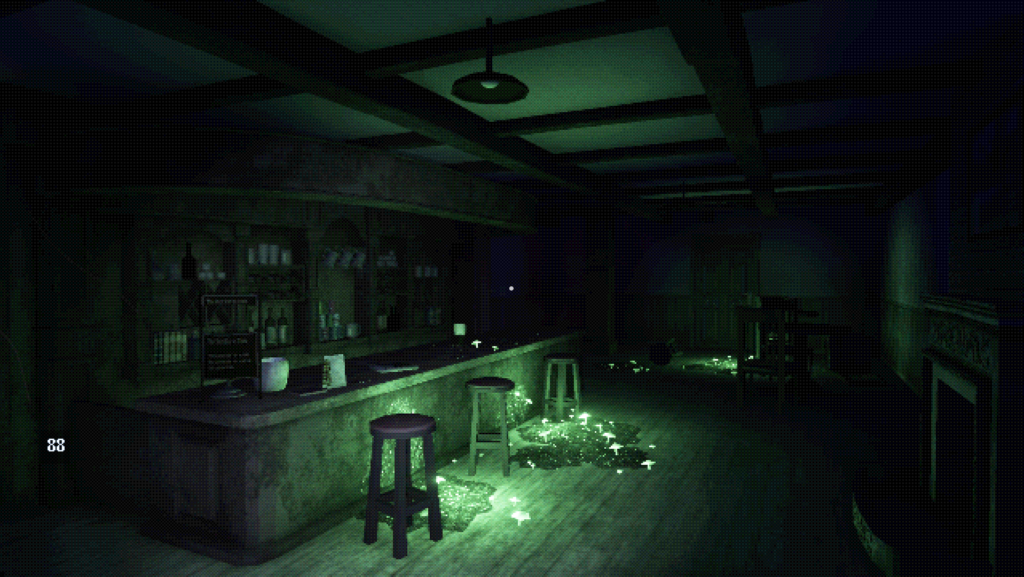
F: Do you have any words for those out there looking to get into making their own games?
N: Start small, you’ll hear that from a lot of developers but its really important if you want to succeed. Find an indie game that is short, with fairly simple features and use that as something to aim for. You’ll be tempted to want to make the sort of games you love but depending on your tastes, most of the time those games are made by huge teams with big budgets. Don’t focus on learning everything, don’t be afraid of using assets to help you. The best way to learn is to limit your scope and know when something is too much work for you. Finishing projects is really important, aim to make something in a month, maybe join a game jam, release something. As soon as you release your first, short and simple game you’ll be one step closing to making the game of your dreams.
For me I found that point and click adventure games were simple enough in their mechanics that it felt like something I could achieve on my own. I focused on art, writing and design and learnt the necessary basics to put these things together in an engine (AGS). I’ve recently played around with Construct and although subscription based (you pay a yearly fee to use the engine) I felt it was really approachable for newcomers, I’d suggest giving that a go. I’d also recommend sticking to 2D for your first project, the third dimension just complicates things when you’re learning the fundamentals. Don’t give up, these things take time. If making games is something you’re really serious about then you must be prepared to spend the time to learn the craft (but only the bits necessary to make your game come to life). Good luck!
F: Thank you for your time, Nathan, it’s been such a pleasure. I honestly can’t wait to see the game for myself. Any idea when we might see it be released?
N: The pleasure is all mine! We’re aiming for Q3 this year but no official date yet.
While there is no set release date for Chasing Static, you can download the demo on Steam right now. The link to it is here. You can also try it out in the Haunted PS1 Demo Disc 2021 here, along with 24 other horror games. You can keep up with Chasing Static’s development by following Nathan on his Twitter, @headwaregames. Boasting audio-driven gameplay wrapped up in a nice PS1 aesthetic, Chasing Static is sure to deliver a unique experience when it releases.
